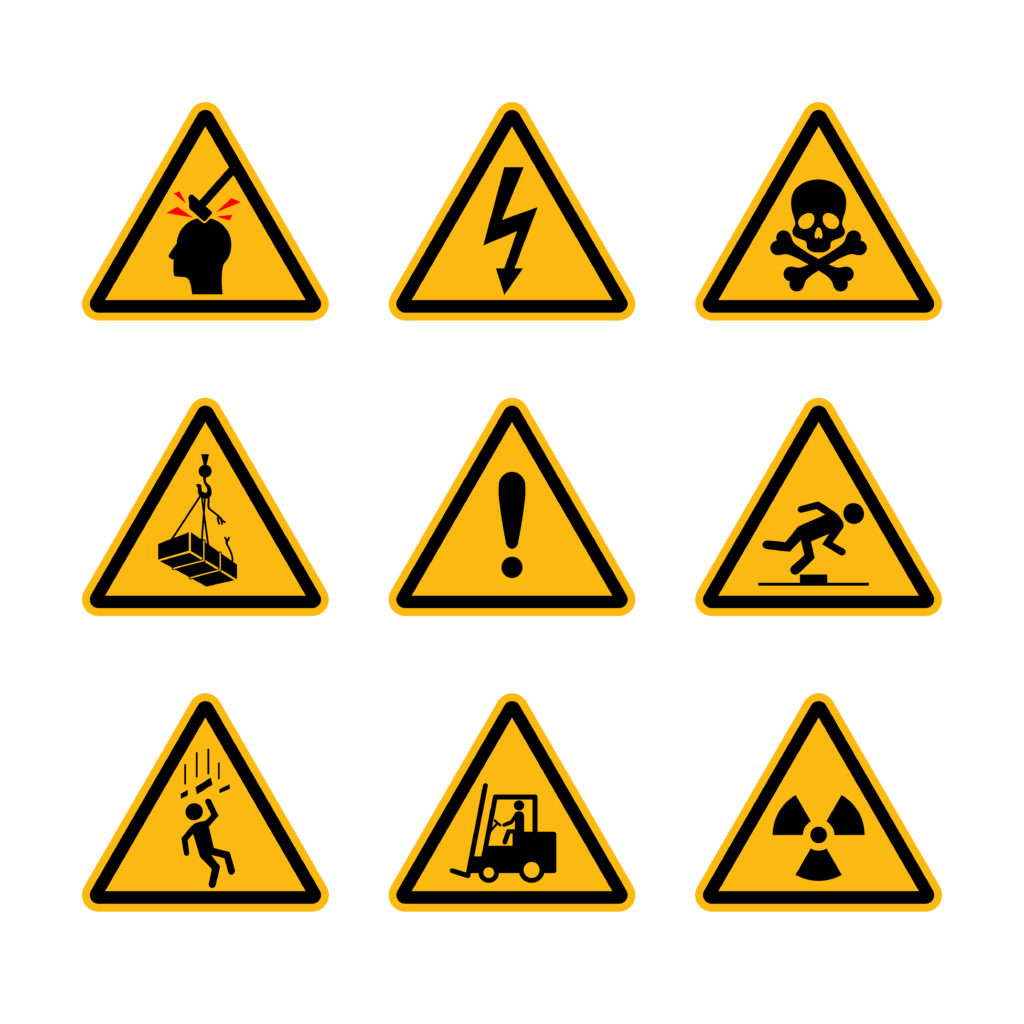
Some examples of hazards and the injury that could occur are:
- Temperature – Heat stress, sunburn, melanoma, hypothermia, freezer burn, frostnip or frostbite
- Ventilation & humidity – headaches, nausea, tiredness, dry or itchy eyes
- Manual Handling – Back injury, musculoskeletal disorders, hernia and many other injuries
- Work with Display screen equipment (DSE) – Musculoskeletal disorders, eyestrain or eye soreness, headaches and blurred vision, fatigue, occupational stress.
- Tripping and slipping – Injury to any part of the body depending on how you fall and what you are carrying
- Work at heights – Fall of the persons, suspension trauma or objects falling and hitting someone on the ground
- Obstructions – Striking against it, tripping over it as well as blocking emergency escape routes
- Poor Stacking or Storage – Falling materials, back injuries, falls during retrieval.
- Repetitive movements – Musculoskeletal disorders
- Fire and explosion – Burns, health effects of smoke inhalation, exposure to hazardous substances, toxic fumes, psychological trauma
- Hazardous chemical substances – Acute and chronic health effects, allergies. When we know the hazards, we can work out the risk factors and what control measures we need to adapt to reduce or eliminate the risk.
Finally, hazards in the workplace can also cause harm to the environment. This can be things like chemicals getting into to rivers or dust leaving a factory.

We offer a full range of First Aid Equipment and CPR Manikins.

